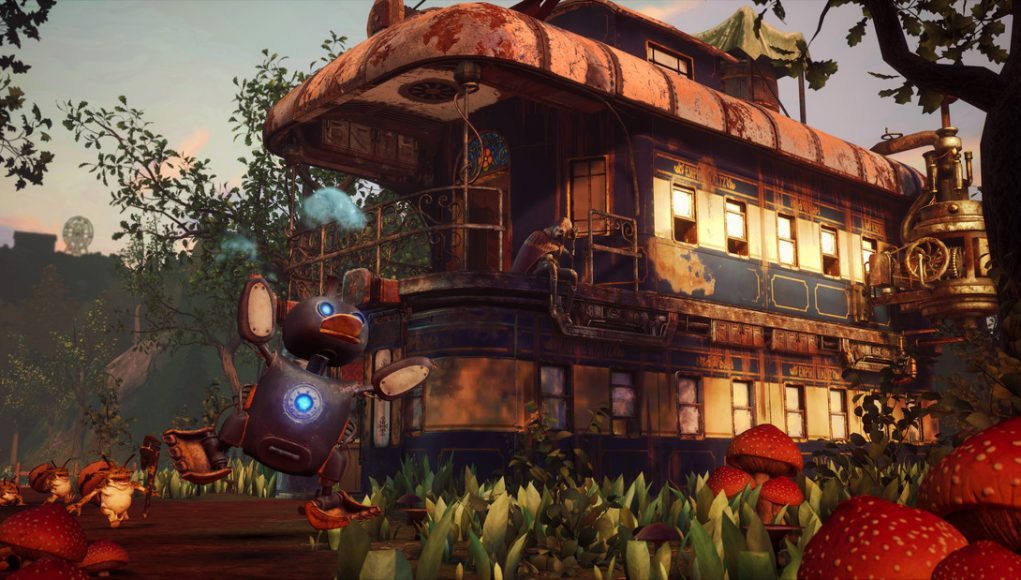Chiaro and the Elixir of Life (2018) is a single-player, story-driven adventure game with emphasis on puzzle-solving and some light platforming. Accompanied by your penguin robot pal Boka, you go out in search of the Elixir of Life, a special alchemical brew that brings life to machines like Boka. Grand Studio Ghibli-style set pieces, mostly fun characters, and some interesting puzzles are however hobbled by finicky object interaction and a tone-deaf script that doesn’t ever quite deliver the punch it promises.
Chiaro and the Elixir of Life Review Details:
Developer: Martov Co.
Available On: Steam (Vive, Rift, Windows VR), Oculus Store (Rift)
Reviewed On: Rift, Vive
Release Date: September 14th, 2018
Gameplay
Chiaro and the Elixir of Life features a unique portaling mechanic that drives most of the action. During the course of the game, you happen upon a knife that contains a portal-opening ball at its base; when you dislodge the ball from the knife and throw it, you can then connect a few floating dots that appear in front of you with the knife’s blade, letting you open a portal to where your ball landed.
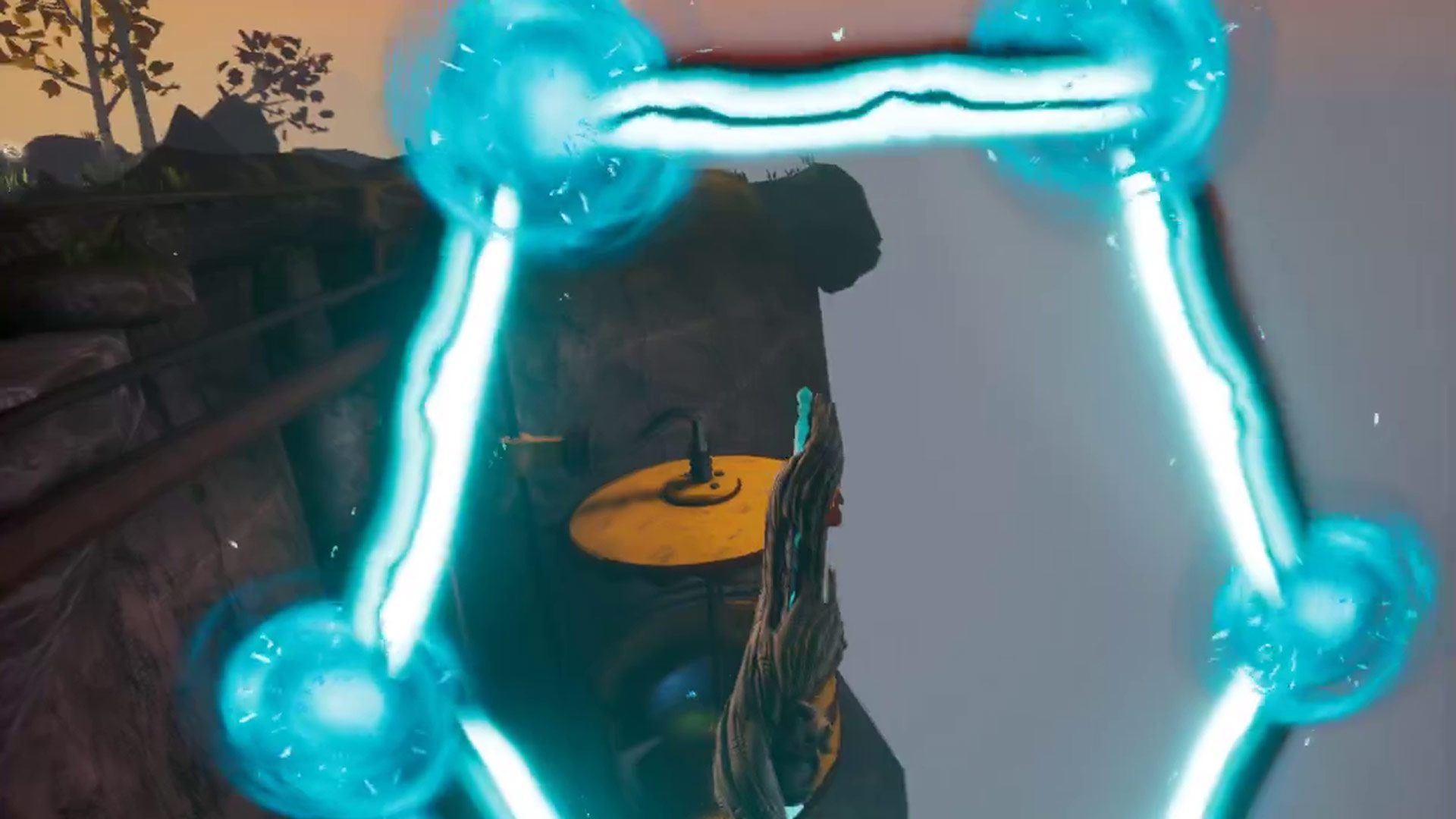
The knife’s portal-ball eventually also doubles as an incendiary device, which will help you blow up obstacles like ice walls, and the game’s few bad guys which you meet later on. While not a combat-driven game per se, locomotion, clearing obstacles, and blowing up the odd robot require you to throw the portal-ball accurately so you can land a hit where it counts. The game smartly prefaces all of this by getting you to play catch with Boka first, doubling as a bonding moment between you and the quippy bot-buddy before you head out on the adventure. Throwing the portal-ball generally worked well, and while the whole mechanic begins to wear a little thin in the ‘wow’ department after the 50th time, it’s still a fun and creative way of getting around.
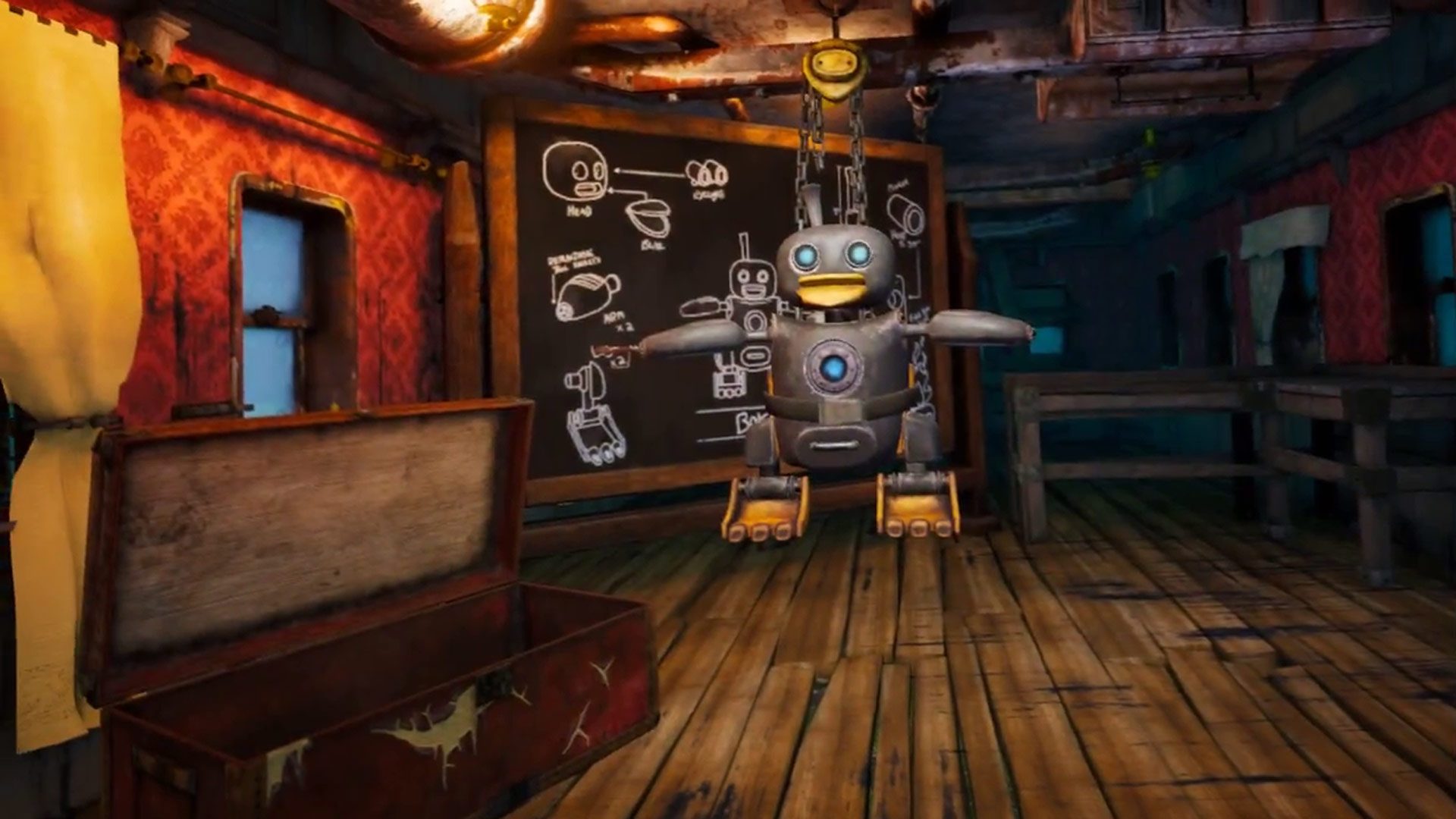
Much of the portal-ball movement mechanic culminates in time-sensitive puzzles, the bulk of which take place in the middle of the game where you need to activate disparate energy boilers with the help of your ‘Salamander’s Breath’ blowtorch. Activating all of the boilers in a given room more often than not opens a door to the next puzzle. There are a few other one-off puzzle types throughout—most of them simple—that keep things from getting too repetitive.
Even when object interaction suffers (more on that later), puzzles are mostly rewarding enough to keep you pushing forward. There are some basic issues though that would stop even the most resourceful players from getting through the game without feeling a bit frustrated.
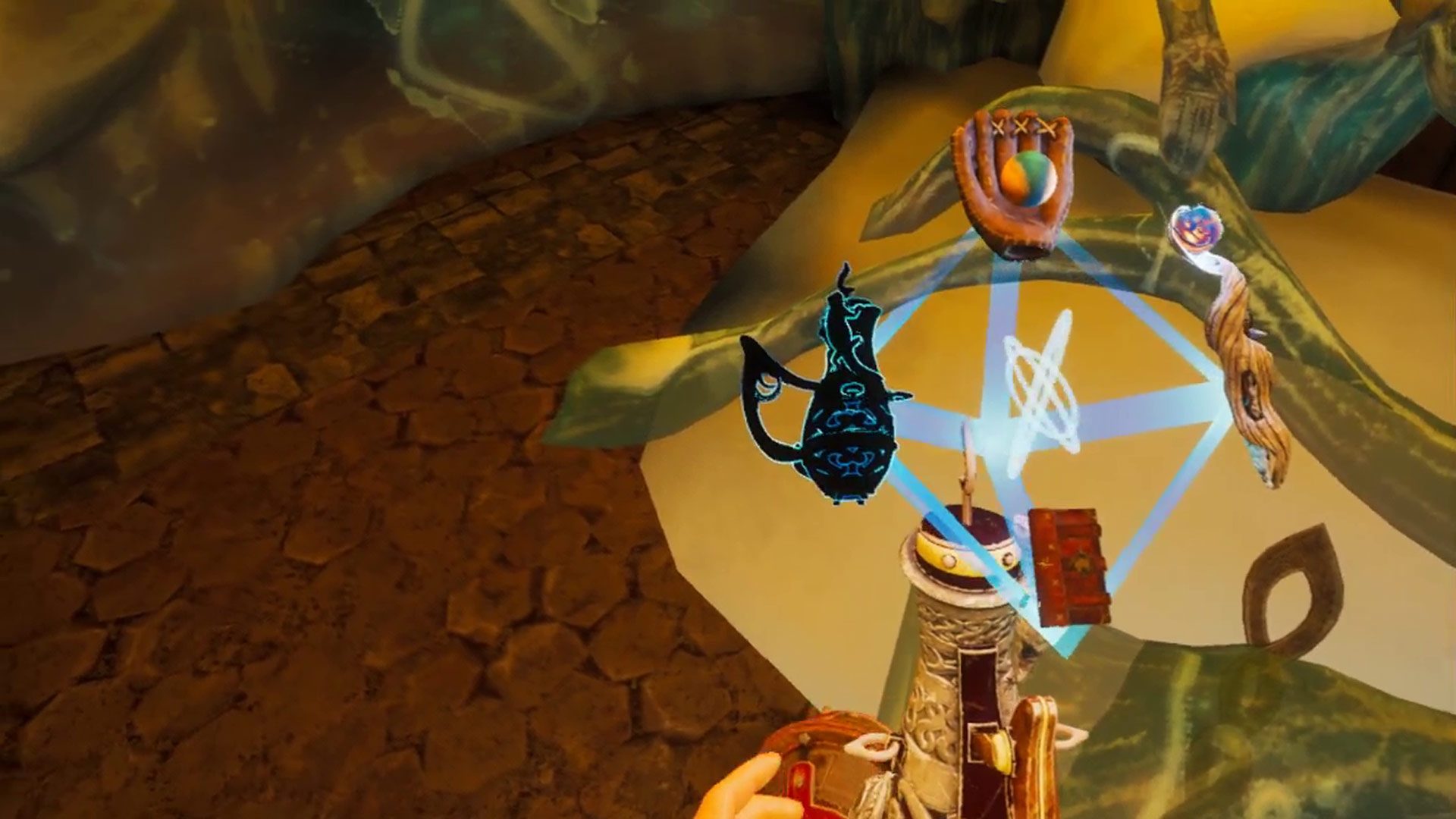
I encountered several bugs throughout my testing of game’s final consumer version: a power receptacle that needed to be open was closed shut and wouldn’t budge. A key item fell through the world and never reappeared. A character was in the middle of explaining how a large 3D printer worked, but disappeared mid-sentence, only to be found a few meters away sitting in a chair humming a tune ad infinitum, leaving me to figure out the contraption without any explanation. In these moments, I did everything I could to continue, although in the end the only fix was to restart the chapter from scratch; no mid-chapter saves are allowed.
While the bugs I found are likely to be fixed in future updates, the game’s inconsistent object interaction really left much to be desired, which I’ll talk more about in the Immersion section below.
Finishing Chiaro in around three hours, I never really got that Studio Ghibli-esque emotional punch the game wanted me to feel. There’s some clear intention to make characters as endearing as possible and even put them in harm’s way, but it oftentimes lands an ineffectual hit. When a dramatic moment happens that’s supposed to deliver genuine wonder or even loss, it’s invariably punctuated with unabashed cringe-inducing songs, or corny dialogue that all feels shoehorned into what otherwise should have been a moment to reflect on something important.
Immersion
The game’s cartoony set pieces and character design are competent, albeit a bit low resolution in terms of textures used; the overall effect though really helps visually build the Studio Ghibli-inspired world developers were looking to create. The game’s orchestral soundtrack is also a delight to hear, as it accompanies you along your trials through the game’s varying areas, be it a dangerous fire temple or a serene lake.
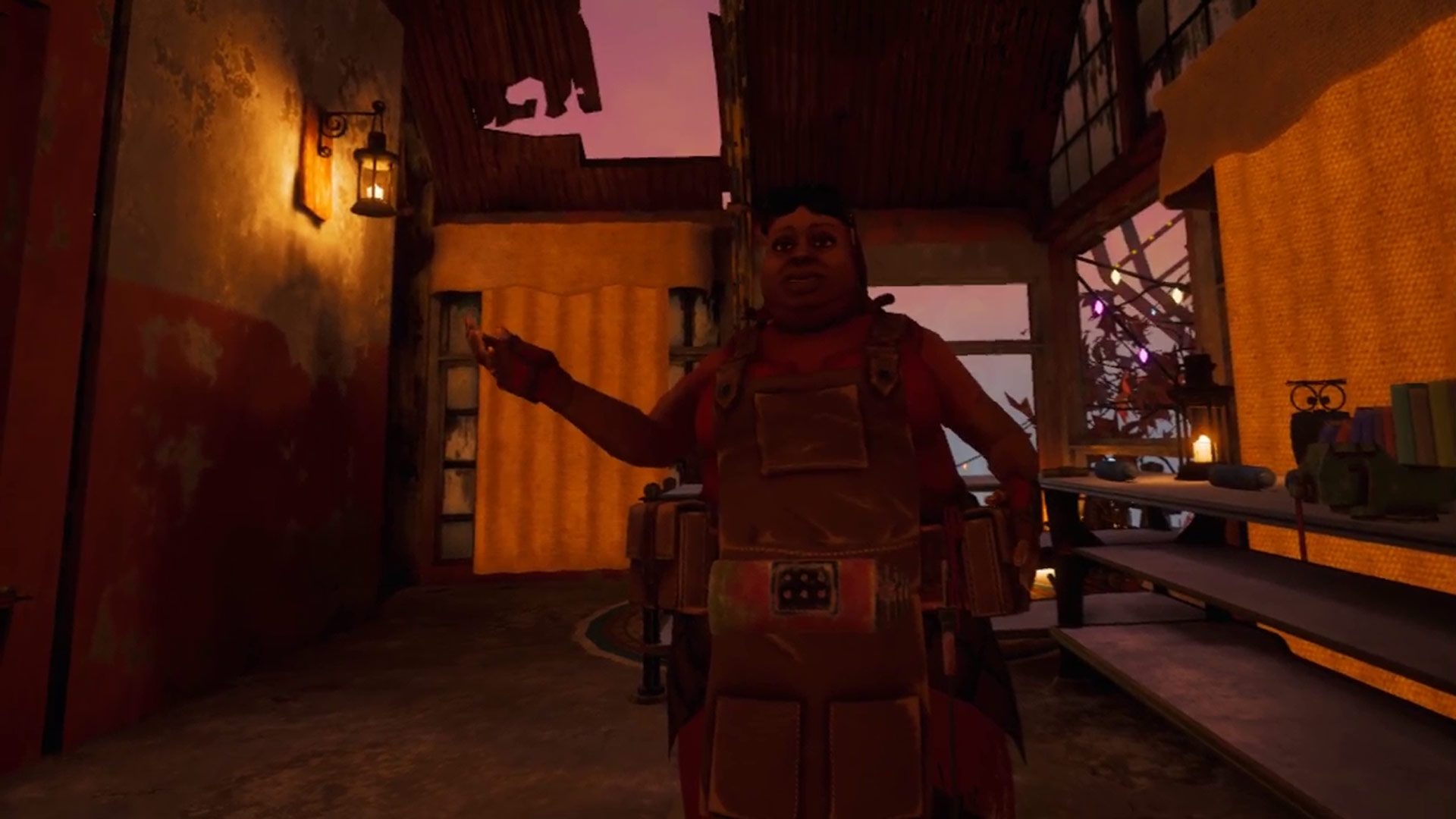
Interior level design is mostly good, however much of the game features conveniently placed barriers like crashed planes and even invisible walls that keep you confined to a certain area, making you take the game’s very specific path through the narrative. These barriers are an absolute detriment to immersion, as you curiously try to walk in an open field only to be met with invisible wall, or see a downed plane that you would otherwise easily teleport over or create a portal to bypass. It’s a lazy touch to level design that becomes even more frustrating in VR, as your expectations of existing in the world are entirely thwarted.
Object interaction is also inconsistent, and at times very frustrating. Oftentimes I experienced objects wigging out and clashing with the game’s geometry (retrieving anything from a drawer can be hit and miss). Hand presence is also fairly low due to the over-sized hand models that are anchored strangely to your controller, making the game’s smaller control panels, levers, and knobs extremely fiddly to operate.
Teleportation (not counting the portaling mechanic) is the sole way of moving around the world of Chiaro, which not an entirely bad thing, would have been better serviced with some additional options.
Comfort
That said, teleportation is one of the most comfortable ways to move around in VR, although some options would have been greatly appreciated in that department. Rift users have snap-turn at their disposal (for 180-degree setups), while Vive users simply look in their desired direction. An option for smooth-turning was grayed out in the settings menu, which I assume will come in a future update.
Chiaro is decidedly missing some ‘quality of life’ options that would help it overcome some of its inherent awkwardness of toggling the crouch button and seeing the world lower by a few feet. Without a ‘force grab’ to reach objects, you’re basically toggling the crouch button every so often to pick up something from the floor, which can be both annoying from a comfort standpoint and a break in immersion.

